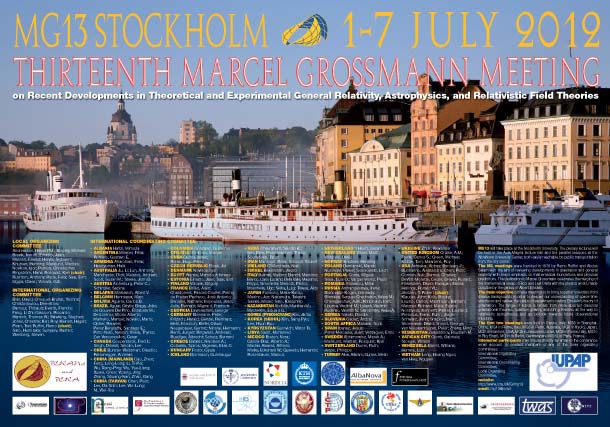Vacuum Expo 2012
Updated: 2012-08-30 00:00:00
Conference: 17 Oct 2012 - 18 Oct 2012, Coventry, United Kingdom. Organized by Xmark Media Ltd.
 We were all transfixed by the Higgs seminars on July 4, but the work was nowhere near over for the experimentalists — they had to actually write up papers describing the results. And of course taking the opportunity to do a little more analysis along the way. Now the papers have appeared on the arxiv. [...]
We were all transfixed by the Higgs seminars on July 4, but the work was nowhere near over for the experimentalists — they had to actually write up papers describing the results. And of course taking the opportunity to do a little more analysis along the way. Now the papers have appeared on the arxiv. [...] SciLogs All Blogs Previous Next 13th Marcel Grossmann Meeting from Marcel S . Pawlowski 02. July 2012, 14:28 We are now on our way to the 13th Marcel Grossmann Meeting in Stockholm . The meeting of physicists and astronomers covers General Relativity , Gravity and relativistic field theories and is held every three years since 1975 in different cities . It is named after Marcel Grossmann who was a Swiss mathematician and a collaborator of Einstein in his work on general relativity . Following his recent review paper The dark matter crisis : falsification of the current standard model of cosmology Pavel has been invited by Davit Merrit to give a talk in the parallel session EG4 : Self-Gravitating System The session will take place tomorrow afternoon Tuesday , 3rd of July at the AlbaNova
SciLogs All Blogs Previous Next 13th Marcel Grossmann Meeting from Marcel S . Pawlowski 02. July 2012, 14:28 We are now on our way to the 13th Marcel Grossmann Meeting in Stockholm . The meeting of physicists and astronomers covers General Relativity , Gravity and relativistic field theories and is held every three years since 1975 in different cities . It is named after Marcel Grossmann who was a Swiss mathematician and a collaborator of Einstein in his work on general relativity . Following his recent review paper The dark matter crisis : falsification of the current standard model of cosmology Pavel has been invited by Davit Merrit to give a talk in the parallel session EG4 : Self-Gravitating System The session will take place tomorrow afternoon Tuesday , 3rd of July at the AlbaNova